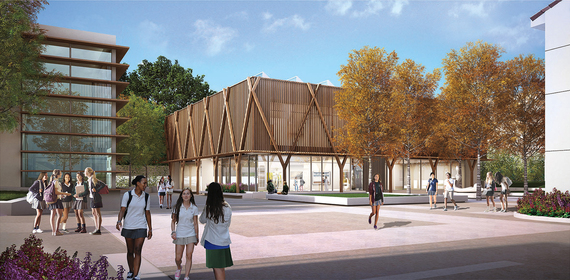"We are different people in different places."
Alain de Botton from The Architecture of Happiness
Early in my career I taught a course entitled American History Through Architecture. I loved the class because it offered my students a visual text to interpret the evolution of our country and its people. At the time I was teaching at a boarding school in upstate New York. Walking tours of Victorian cities such as Saratoga Springs and Troy not only brought history to life but conveyed a universal lesson: architecture is the ultimate art of the people with enormous potential to convey beauty and meaning in everyday life. The choices we make about the buildings we build, therefore, have the capacity to do one of two things: contribute either to our sense of well-being or, to quote novelist Milan Kundera the "uglification of the world."
 There is an undeniable psychology of architecture, an indelible connection between our identities and our locations. In his book, The Architecture of Happiness, Alain de Botton writes, "One of the great but often unmentioned causes of both happiness and misery is the quality of our environment: the kinds of walls, chairs, buildings, and streets that surround us. And yet a concern for architecture is too often described as frivolous, even self-indulgent." In short, de Botton asserts that where we are heavily influences who we can be, and that it is architecture's task to stand as an eloquent reminder of our full potential. Nowhere is this truer than in a school, where the very purpose is to elevate our children's potential. A beautiful school is a gift from one generation to the next, an acknowledgment that our hope as a society lies within our children's capacity to become thoughtful, ethical, and contributing adults.
There is an undeniable psychology of architecture, an indelible connection between our identities and our locations. In his book, The Architecture of Happiness, Alain de Botton writes, "One of the great but often unmentioned causes of both happiness and misery is the quality of our environment: the kinds of walls, chairs, buildings, and streets that surround us. And yet a concern for architecture is too often described as frivolous, even self-indulgent." In short, de Botton asserts that where we are heavily influences who we can be, and that it is architecture's task to stand as an eloquent reminder of our full potential. Nowhere is this truer than in a school, where the very purpose is to elevate our children's potential. A beautiful school is a gift from one generation to the next, an acknowledgment that our hope as a society lies within our children's capacity to become thoughtful, ethical, and contributing adults.
Schools are, in essence, the most important buildings that we build. Architect and former professor at Harvard University's Graduate School of Design, Jonathan Levi, has argued that in a world where we no longer build cathedrals, schools offer a source of community and inspiration which we crave as human beings and which, for many, religion no longer satisfies. In addition to serving as the social magnets of our communities, schools also represent an important intersection between education and architecture; Levi posits that both educators and architects are futurists - giving utterance to the future in a world where the present is totally unsatisfactory.
Anyone visiting Los Angeles and glimpsing the decrepit structures that pass for our schools would have a hard time believing that California public schools were once among the best in the nation. Equally telling is the fact that cars in this city routinely fail to stop for school buses and neighbors feel no compunction about attacking the independent schools that have filled L.A.'s educational void. Much of L.A.'s architectural investment lies behind private gates in proudly exclusive neighborhoods. There are important exceptions of course such as the Getty, Walt Disney Concert Hall and the Broad Museum, but on the whole Los Angeles is a city where our civic architecture, and especially our schools, do not convey a belief in our children or the future.
As the Head of a Los Angeles independent school about to break ground on a campus specifically conceived for teaching girls in the 21st century, it was imperative that our architects, Craig Jameson and Joe Masotta of Parallax Associates, designed buildings that would convey an absolute belief in our girls' potential to succeed, ascend, and lead. The theme they chose was that of an urban forest, an allusion to Artemis, protector of girls, and our school's namesake. Despite four years of opposition from some of our neighbors, the project and its aesthetic remains largely intact and poised to stand as a beacon for our city's commitment to women's empowerment for generations to come.

